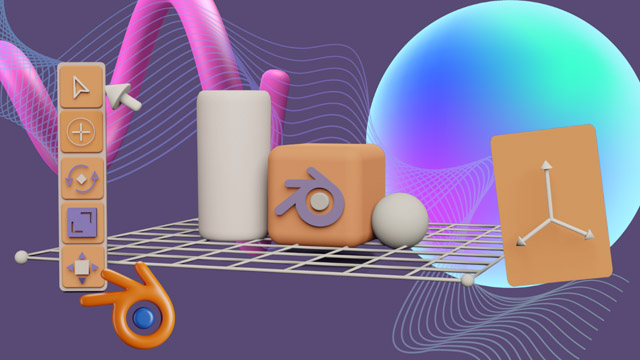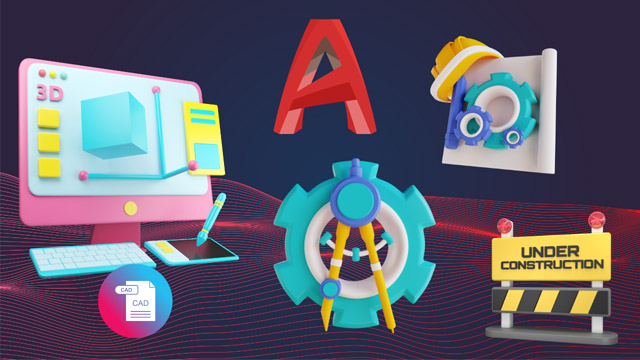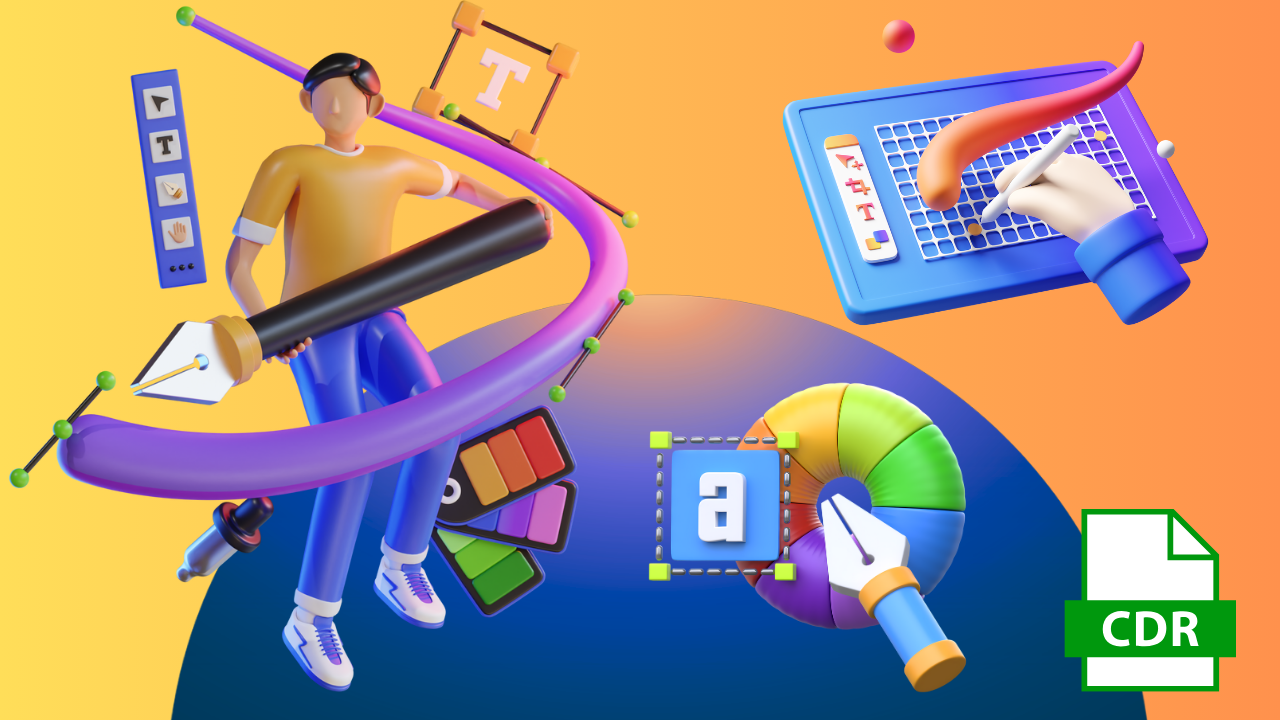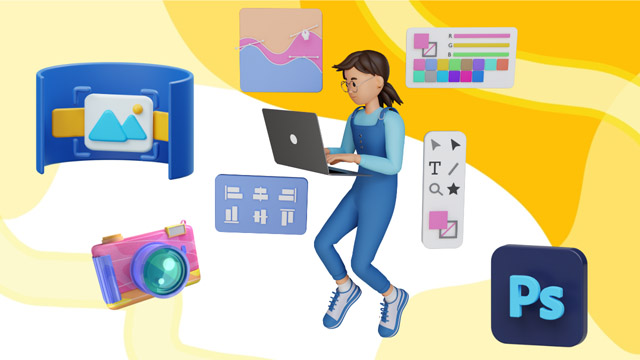- Aspiring 3D Artists and Animators: Individuals aiming to build a career in 3D modelling and animation across various industries.
- Students and Graduates in Art, Design, and Animation: Those pursuing studies in related fields, seeking to enhance their skills in 3D content creation.
- Game Developers: Professionals and enthusiasts looking to create engaging virtual worlds and characters for digital games.
- Architects and Engineers: Individuals interested in using 3D software to demonstrate proposed landscapes, structures, and designs.
- Medical Professionals: Those aiming to create 3D models of organs and other anatomical structures for educational and diagnostic purposes.
- Scientists and Researchers: Individuals utilizing 3D geological models and other scientific visualizations in their work.
- Hobbyists and Art Enthusiasts: Individuals passionate about art and design, seeking to learn 3D modelling for personal projects.
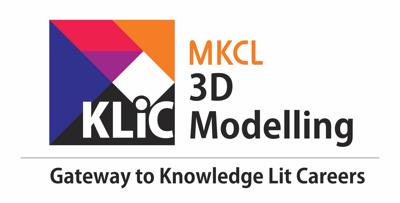
KLiC 3D Modelling
3D modeling and animation have transformed numerous fields, including filmmaking, computer games, and architecture and product design. Yet the underlying basis of high-quality 3D production originates in traditional design and animation methodologies. This course provides an introduction to the exciting world of 3D content creation, while emphasizing its connection to the creative thought process. Students will learn an overview of the artist workflow as it relates to modeling, texturing, animation, lighting and rendering. This course offers a new dimension to the process of filmmaking and design.
Who Should Join
What you'll learn ?
Nowadays, 3D modelling is used in various fields. Movies has animated characters, objects and environment. Many digital games create engaging virtual worlds. Architects, engineers use 3D softwares to demonstrate proposed landscapes, structures etc. Even 3D models of organs are used in Medical Industry. Scientists use 3D geological models. As the use of 3D models increases, the demand for the same increases. If you want make career in any of the above mentioned fields, you must learn 3D Modelling!
Certification
- KLiC courses are recognised by Yashwantrao Chavan Maharashtra Open University (YCMOU).
- MKCL provides certificate to the KLiC learner after his/her successful course completion.
- Yashwantrao Chavan Maharashtra Open University (YCMOU) provides mark sheet to successfully passed KLiC learners (Jurisdiction: Maharashtra).
Academic Approach
The academic approach of the courses focuses on the “work-centric” education i.e. begin with work (and not from a book!), derive knowledge from work and apply that knowledge to make the work more wholesome, useful and delightful. The ultimate objective is to empower the Learner to engage in socially useful and productive work. It aims at leading the learner to his/her rewarding career as an employee or entrepreneur as well as development of the community to which s/he belongs. Learning methodology:
- Step -1: Learners are given an overview of the course and its connection to life and work.
- Step -2: Learners are exposed to the specific tool(s) used in the course through the various real-life applications of the tool(s).
- Step -3: Learners are acquainted with the careers and the hierarchy of roles they can perform at workplaces after attaining increasing levels of mastery over the tool(s).
- Step -4: Learners are acquainted with the architecture of the tool or tool map so as to appreciate various parts of the tool, their functions, utility and inter-relations.
- Step -5: Learners are exposed to simple application development methodology by using the tool at the beginner’s level.
- Step -6: Learners perform the differential skills related to the use of the tool to improve the given ready-made industry-standard outputs.
- Step -7: Learners are engaged in appreciation of real-life case studies developed by the experts.
- Step -8: Learners are encouraged to proceed from appreciation to imitation of the experts.
- Step -9: After the imitation experience, they are required to improve the expert’s outputs so that they proceed from mere imitation to emulation.
- Step-10: Emulation is taken a level further from working with differential skills towards the visualization and creation of a complete output according to the requirements provided. (Long Assignments)
- Step-11: Understanding the requirements, communicating one’s own thoughts and presenting are important skills required in facing an interview for securing a work order/job. For instilling these skills, learners are presented with various subject-specific technical as well as HR-oriented questions and encouraged to answer them.
- Step-12: Finally, they develop the integral skills involving optimal methods and best practices to produce useful outputs right from scratch, publish them in their ePortfolio and thereby proceed from emulation to self-expression, from self-expression to self-confidence and from self-confidence to self-reliance and self-esteem!
Syllabus
- Watching 3D movies
- Entering into CGI industry
- Beginning with CGI
- Taking a career path in 3D industry
- Getting started with 3D software
- Working with Blender
- Situation: First model
- Situation: Coral
- Situation: Loop cut Rat
- Situation: N-Gon
- Situation: Cactus
- Situation: Pipe
- Situation: Chocolate cube
- Situation: Spring
- Situation: Stone
- Situation: Pillar
- Situation: Screw
- Situation: Top
- Situation: Temple
- Situation: Ceiling fan
- Situation: Rupee
- Situation: Apple
- Situation: Bullock cart wheel
- Situation: Stairs
- Situation: Football
- Situation: Monster character
- Situation: Carom
- Situation: Soccer net
- Situation: Flute
- Adding facial shape keys
- Situation: Pool table
- Situation: Couch
- Situation: Guitar
- Situation: Balcony
- Situation: Nomenclature
- Situation: sculpting human head
- Situation: Human denture
- Situation: Retopology
- Normal map Pineapple man
- Situation: Watch
- Situation: Giant wheel
- Situation: Goggle
- Delay to send photorealistic image
- Situation: Bottle
- Presenting the Model
- Freelancing
- Selling 3D Content
- The Story of CGI
Skills: 3D movies, Comprehend CGI, 3d animation process, CG modeler, install Blender, Various parts of blender
Outputs: Create a toy, create a Coral, create a Chair, create a Chocolate cube, create a Pipe, create a Pillar, create a Ceiling fan, and create a Bullock cart wheel
Create a toy

Create a chair

Evaluation Pattern
Evaluation Pattern of KLiC Courses consists of 4 Sections as per below table:
| Section No. | Section Name | Total Marks | Minimum Passing Marks |
|---|---|---|---|
| 1 | Learning Progression | 25 | 10 |
| 2 | Internal Assessment | 25 | 10 |
| 3 | Final Online Examination | 50 | 20 |
| Total | 100 | 40 | |
| 4 | SUPWs (Socially Useful and Productive Work in form of Assignments) | 5 Assignments | 2 Assignments to be Completed & Uploaded |
YCMOU Mark Sheet
Printed Mark Sheet will be issued by YCMOU on successful completion of Section 1, Section 2 and Section 3 and will be delivered to the learner by MKCL.
YCMOU Mark Sheet will be available only for Maharashtra jurisdiction learners.
MKCL's KLiC Certificate
The certificate will be provided to the learner who will satisfy the below criteria:
- Learners who have successfully completed above mentioned 3 Sections i.e. Section 1, Section 2 and Section 3
- Additionally, learner should have completed Section 4 (i.e. Section 4 will comprise of SUPWs i.e. Socially Useful and Productive Work in form of Assignments)
- Learner has to complete and upload minimum 2 out of 5 Assignments
KLiC Courses Fee Structure from 01 July, 2025 Onwards
KLiC 120 hour course fee applicable from 01 July, 2025 all over Maharashtra
| KLiC Course Duration | MFO: MKCL Share (Including 18% GST) |
ALC Share (Service Charges to be collected by ALC) |
MKCL Certificate | YCMOU Marksheet |
|---|---|---|---|---|
| 120 hours (Without YCMOU Marksheet) | Rs. 1,000/- | Rs. 5,000/- | Available | Not Available |
| 120 hours (With YCMOU Marksheet) | Rs. 1,118/- | Rs. 5,000/- | Available | Available |
* Above mentioned fee is applicable for all Modes of KLiC Courses offered at Authorised Learning Center (ALC) and at Satellite Center
* Total fee is including of Course fees, Examination fees and Certification fees
* MKCL reserves the right to modify the Fee anytime without any prior notice
KLiC Courses Fee Structure upto 30 June, 2025
From 01 January 2025 onwards, the fees for all KLiC courses in ALCs of Mumbai Metropolitan Regional Development Authority (MMRDA), Pune Metropolitan Regional Development Authority (PMRDA) and Rest of Maharashtra will be applicable as shown in the table below:
KLiC Courses of 120 Hours:
| Mode | Total Fee (Rupees) |
Single Installment (Rupees) |
Two Installments (Rupees) |
| Single Installment | 6000/- | 6000/- | N/A |
| Two Installments | 6200/- | 3100/- | 3100/- |
Total fee is including of Course fees, Examination fees and Certification fees
* Above mentioned fee is applicable for all Modes of KLiC Courses offered at Authorised Learning Center (ALC) and at Satellite Center
* Total fee is including of Course fees, Examination fees and Certification fees
* MKCL reserves the right to modify the Fee anytime without any prior notice
